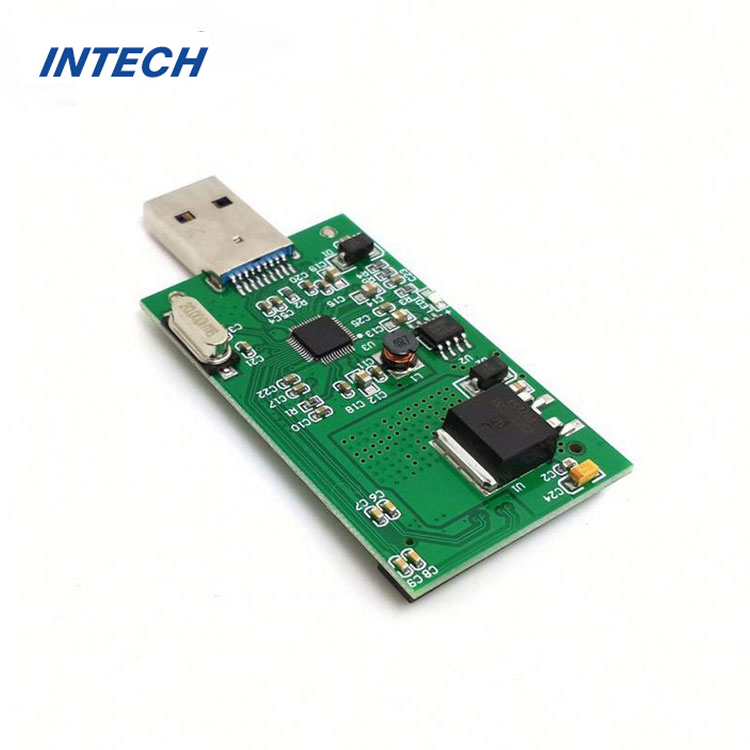What is the thermal conductivity of PCB board?
Date:2023-10-23 11:02:22
Understanding the Thermal Conductivity of PCB Boards for Efficient Performance
PCB boards, also known as Printed Circuit Boards, play a fundamental role in electronic devices by providing connectivity and support to various components. While their electrical properties are well-known, the thermal conductivity of PCB boards is equally crucial for their efficient performance. In this article, we will delve into the details of thermal conductivity in PCB boards, its measurement, factors affecting it, and its significance in electronic applications.

1. Definition and Measurement of Thermal Conductivity
Thermal conductivity refers to the ability of a material to conduct heat. It is defined as the quantity of heat transmitted through a unit thickness of a material in a direction normal to a surface of unit area due to a unit temperature gradient under steady-state conditions. For PCB boards, thermal conductivity is usually measured in watts per meter-kelvin (W/mK).
2. Factors Affecting Thermal Conductivity
The thermal conductivity of a PCB board is influenced by several factors:
- Material: Different materials have different thermal conductivity values. PCB boards are commonly made of materials like FR4, ceramic, or metalcore, each with its own thermal conductivity characteristics.
- Thickness: Thicker PCB boards generally have lower thermal conductivity as heat has to travel across a greater distance.
- Layer composition: The number and arrangement of copper layers, insulating layers, and other materials in a PCB board affect its thermal conductivity.
- Presence of thermal vias: The inclusion of thermal vias in a PCB board can enhance its thermal conductivity by allowing heat to dissipate more effectively.
3. Importance of Thermal Conductivity in PCB Boards
Efficient thermal management is crucial in electronic devices for several reasons:
- Heat dissipation: PCB boards with high thermal conductivity can efficiently dissipate heat generated by components, preventing overheating and subsequent malfunctions.
- Extended lifespan: Proper heat dissipation ensures that electronic components operate within their recommended temperature ranges, leading to a longer lifespan.
- Reduced failure rate: Excessive heat can cause components to degrade and fail prematurely. By maintaining optimal operating temperatures, the failure rate of electronic devices can be significantly reduced.
4. Measurement Techniques for Thermal Conductivity
Several methods are used to measure the thermal conductivity of PCB boards:
- Modified Transient Plane Source (MTPS): This method involves the use of a hot disk sensor to measure the thermal conductivity and thermal diffusivity simultaneously.
- Hot Wire Method: In this technique, a heated wire is placed in contact with the PCB board, and the temperature gradient is measured to determine the thermal conductivity.
- Laser Flash Analysis: This method measures the thermal conductivity by analyzing the temperature rise resulting from a pulsed laser applied to the PCB board surface.
5. Improving Thermal Conductivity in PCB Boards
Several techniques can enhance the thermal conductivity of PCB boards:
- Selection of suitable materials: Choosing materials with higher thermal conductivity, such as ceramics or metalcore PCBs, can significantly enhance heat dissipation.
- Optimized layer composition: Designing PCB boards with an appropriate number and arrangement of copper layers and insulating materials can improve thermal conductivity.
- Optimal via placement: Careful placement of thermal vias in areas prone to heat generation can facilitate better heat dissipation.
6. Recent Advancements in Thermal Conductivity Enhancement
Researchers and manufacturers are continually exploring innovative methods to improve thermal conductivity in PCB boards. These include the use of advanced materials such as graphene or carbon nanotubes, as well as implementing new manufacturing techniques to enhance heat dissipation capabilities.
7. Conclusion
The thermal conductivity of PCB boards is a crucial aspect to consider for efficient and reliable electronic device performance. Understanding the factors affecting thermal conductivity and implementing appropriate techniques to enhance it can lead to improved heat dissipation, extended lifespan of components, and reduced failure rates. With ongoing advancements in materials and manufacturing processes, the future holds promising prospects for further enhancing thermal conductivity in PCB boards.
Summary
The thermal conductivity of PCB boards plays a vital role in ensuring efficient heat dissipation in electronic devices, thereby extending their lifespan and reducing failure rates. Factors such as material selection, thickness, layer composition, and the presence of thermal vias influence the thermal conductivity of PCB boards. Various measurement techniques, including MTPS, hot wire, and laser flash analysis, are used to determine thermal conductivity. Techniques to improve thermal conductivity include suitable material selection, optimized layer composition, and optimal placement of thermal vias. Ongoing advancements, including the use of advanced materials and innovative manufacturing techniques, hold the potential for further enhancing thermal conductivity in PCB boards.
